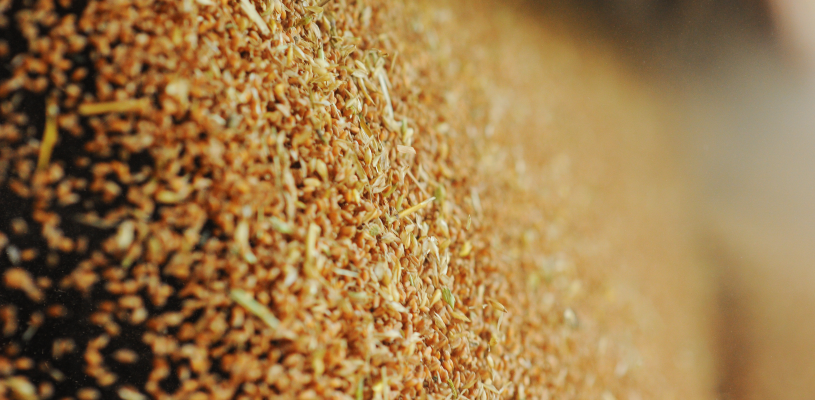Giving thanks for our crops
Today it is thanksgiving in the U.S. and Brazil. It is a day of giving thanks for the blessing of the harvest. A day to be grateful for the food that nature provides and of course to the farmers that make it happen! As with many things there are good years and bad years. So how were this year’s harvests? Let’s have a look:
Europe
Despite facing many challenges, Europe produced more wheat this year as farmers were able to expand the planted area after rain disrupted sowing the previous season and with late spring weather helping crop growth. According to the latest statistics, wheat production in 2021 is approximately 135 million tons. This is 7% ahead of the 2020 harvest.
Extreme weather during harvest time in 2021 hampered field activities in a number of countries and played havoc with crop quality. Harvest rains and quality issues were observed in France, western parts of Germany and large parts of Poland. As the season progressed, the wet weather extended further into Belarus and south as far as northern Italy. However the impact on crop quality here was not as great. In the north of Europe, a hotter than usual July in Sweden, the Baltic states and Finland affected grain filling of spring and winter cereal crops as soil moisture became a limiting factor early.
Americas
In the Americas, the 2021 wheat harvest also dealt with many weather variables, ranging from delays at harvest to early harvest in some states. Wheat crop quality ended up better than expected on average. In both Canada and the US exceptionally hot and dry weather curtailed crop yields and resulted in multi-year low yields for wheat and rapeseed crops. However the silver lining is after years of excess supply, a smaller harvest has helped to increase market prices, along with strengthened demand. In the US, wheat yields were reduced by around 12%, while in parts of Canada yields were roughly 33% below trend this year compared to 2020. Across North America, it is estimated that inventories of wheat, rape, corn and soybeans are all projected to fall to near decade lows relative to consumption by the end of the calendar year.
Asia
China’s grain output in 2021 set a new record by exceeding 650 billion tons for the seventh year in a row. It is expected that the autumn grain yield will increase, and with 80% of the harvest now completed, the recent spells of prolonged rain should have a limited impact. The quantity and quality of grains has also improved with wheat production increasing by 1,5% on the previous year. The rice harvest output also saw a substantial increase. Despite the heavy rains in many major crop growing provinces, overall grain output remained stable and increased due to expanded planted areas of some highly productive crops such as corn. Average grain prices also rose by 6% despite abundant stockpiles currently in reserve. To ensure continuity of supply, China has built national seed resource bases for its future crop requirements.
In India, a record production of 305 million tons of grains was seen in 2021 harvest, an increase of around 8 million tons on last year. The higher production is driven by record production of rice, wheat, corn and pulses. Inventory grain stocks have increased as a result of several back to back record harvests in recent years. Efforts are being made to reduce these and release into the market to match customer demands and ease prices.
The crops business
For farmers talking about the weather IS talking business. Judging by this overall report this season has been favorable in more places than not. So this thanksgiving we have plenty to be thankful for! Thank you to all the farmers who make it happen.

Sources:
www.Fao.org
www.world-grain.com
www.Usda.com